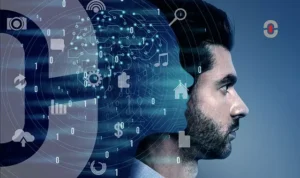In recent years, artificial intelligence has made huge progress in the translation space. What used to be clunky, word-for-word outputs from early machine translation (MT) systems have evolved into tools like Google Translate, DeepL, and even ChatGPT. They’re fast and accessible, making them appealing to businesses of all sizes.
However, scalability in translation isn’t as straightforward—it often introduces complexity and quality issues that require human oversight, especially in nuanced or high-stakes content.
Today, global content production is at an all-time high. Companies are racing to localize at speed and scale, and AI seems like the magic bullet. Whether it’s launching websites in multiple languages or handling live customer chats, AI translation feels like the obvious choice.
Part of the tech boom comes from neural machine translation (NMT), which uses deep learning to guess more contextually accurate phrases. And with large language models (LLMs) like GPT-4 entering the game, AI is more conversational and adaptable than ever. But here’s the real question: can it truly replace a human translator?
What AI Translation Does Well
Let’s be fair—AI tools do bring serious value. Especially in these areas:
Speed
AI translates massive volumes of text in seconds. If you’re running an e-commerce platform with thousands of SKUs or managing community-generated content, AI gives you speed that no human team could match alone.
However, while AI offers rapid translation capabilities, its use at scale can introduce new challenges—especially in quality control. This may work for commoditized or low-risk content, but for high-value goods or premium brands, poor localization can lead to revenue loss or harm brand reputation.
Basic Clarity Across Languages
For casual or internal texts, AI usually gets the job done. Think: onboarding checklists, quick memos, or translating short instructions for internal teams. The message may be a little rough around the edges, but it’s understandable.
Lower Costs
AI is attractive to smaller companies or departments with tight budgets. Instead of paying for human translation of everything, they can let AI handle the groundwork—and bring in a linguist only where needed.
Where It Works Best
- Internal workflows;
- First drafts (pre-human editing);
- Basic SEO or metadata translations ;
- High-volume, low-risk content like FAQs.
Where AI Translation Still Struggles
For all its strengths, AI has some serious blind spots. Here’s where things get tricky:
Cultural Context and Nuance
Languages don’t live in a vacuum—they’re soaked in culture. AI doesn’t always “get” this.
Picture this: translating the phrase “kick off your campaign” into Thai, where referring to feet is offensive. Or trying to translate sarcasm in British English to something that makes sense in Japanese. That’s not a job for pattern-matching algorithms—it’s one for people.
Industry Terminology
Sectors like healthcare, legal, and finance use language differently. A single word might mean one thing to a lawyer and something else to a general reader.
A few years back, a financial firm tried using AI to translate its risk disclosure forms. The translated version softened the tone too much, missing key legal warnings. The fix? Back to a human expert.
Voice, Tone, and Personality
Brand voice is everything. Whether you’re formal, funny, or friendly—tone builds trust.
AI tends to “flatten” voice. A fun and quirky Instagram caption in English might become a sterile sentence in German. That’s not just boring—it’s off-brand.
Privacy and Confidentiality
This one’s huge. Copy-pasting sensitive client data into a free online translator? That could land you in legal hot water.
In highly regulated fields like insurance or medicine, privacy rules like GDPR or HIPAA can get violated without clear AI handling policies. Even major brands have had to walk back campaigns after AI leaks.
When AI Makes Sense—and When It Doesn’t
You can use AI in your workflow. But here’s how to think smart about it:
AI is fine when:
- The content isn’t sensitive;
- You just need a rough understanding;
- It’s a short-term job;
- You’ll have a human post-editor review the output.
Avoid AI if:
- The material is legal, medical, or technical (but only when trained on strict terminology models and followed by expert review);
- Tone or cultural accuracy really matter;
- You’re translating anything sensitive or private.
Hybrid Models: Humans + AI
One smart way to combine both worlds is with MTPE (Machine Translation Post-Editing). That’s where AI drafts the content, and a human linguist cleans it up.
At 1-StopAsia, hybrid workflows like this are becoming the norm. Projects might begin with a DeepL or NMT engine, but a native-speaking expert steps in to check tone, clean up formatting, and flag anything risky. It’s fast—but still human-approved.
Another popular model is Human-in-the-Loop (HITL), where AI tools don’t work independently. A linguist or reviewer is always involved, especially in decision-making stages.
A hybrid workflow—where AI handles the initial draft, and experts do post-editing and quality assurance—can be effective, but only if your organization has a mature localization process, tech stack, and quality metrics in place.
So… Can AI Replace Human Translators?
Short answer: not yet—and probably not fully, ever.
Here’s why:
- AI doesn’t understand emotion or nuance;
- It can’t feel irony or catch implied meaning;
- Cultural shifts or idioms often go over its head;
- It guesses—and sometimes, it guesses wrong.
Translation involves more than linguistic accuracy—it requires a nuanced understanding of local customs, tone, and communication styles. This is especially true in markets like Japan or Korea, where tone and formality can drastically affect meaning.
Human translators bring judgment, empathy, and real-life knowledge. AI doesn’t know what it’s like to grow up in Spain, live in Vietnam, or sell a product to German millennials. But a translator might.
The Real Future? Human-AI Collaboration
Smart companies are pairing AI tools with real people. Not to replace translators—but to boost them.
Think of it like this:
- AI does the heavy lifting
- Humans fine-tune, check tone, and apply cultural sense
You save time. You reduce costs. But you also protect quality—and brand trust.
“Words matter. And behind every great translation is a human who knows exactly how to make them count.”
Bonus: What the Pros Are Saying
In a recent industry report from 2025, over 85% of linguists said they use AI tools—but the majority agreed that AI alone still can’t deliver the nuance and accuracy needed for professional translation.
- “It helps, but I still fix a lot.”
- “Context fails are common.”
- “It doesn’t catch tone shifts.”
The message is clear: AI helps—but humans still lead.
Why Human Judgment Still Wins in the Gray Areas
There are situations where translation isn’t black and white. Think about jokes that rely on cultural context, wordplay in marketing taglines, or even customer support replies that need empathy and diplomacy. These are the gray areas where AI consistently falls short.
Let’s say you’re localizing a mental health app. You can’t afford to mistranslate sensitive topics like anxiety or depression. You need to get the tone exactly right—not too clinical, not too casual. That balance comes from human experience, not algorithms.
Human translators can read between the lines. They can ask questions like:
- What feeling is this trying to evoke?
- How will this message land in a specific culture?
- Is this respectful, persuasive, or warm enough?
These aren’t questions a machine can answer. And until it can, there’s no full replacement for the translator who brings a human heart into the process.
Can AI Ever Learn Empathy?
AI struggles with emotional nuance and tone—particularly in Asian languages like Korean, Japanese, and Vietnamese, where honorifics, tone shifts, and formality play a crucial role in communication. A literal translation may miss the cultural layers that only a human would catch.
Language Is Evolving — and So Should Our Tools
Language isn’t static. Slang changes, expressions evolve, and new terms emerge with every cultural shift. Just think about how quickly phrases from social media or tech trends become part of daily speech.
Human translators adapt to these shifts intuitively. They stay current with how language is actually used—not just how it’s written in training data. AI, on the other hand, can lag behind, especially if it’s not updated regularly or tuned to current events.
For example, an AI trained in 2021 might mistranslate terms like “ghosting,” “quiet quitting,” or “climate anxiety” in ways that miss the intended meaning entirely.
This is where human translators shine. They bring living, breathing awareness into every project—because they’re immersed in the cultures they translate for. That real-time awareness is something AI can’t replicate… at least, not yet.

